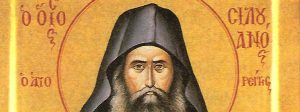Caveat: Before anyone tries to tie this völkerwanderung to racial identiy, remember that “Indo-European” [formerly “Aryan”], like “Celtic,” is a description of languages and cultures, not of DNA. Over the centuries, many strata of language and culture overlie one another, and as often as not it’s the invader who finds his grandchildren speaking the language of the invaded people. (That’s why Spain speaks Spanish not Gothic, and why northern Greece speaks Greek not Slavonic.)
I wish this map could also show the growth of the “Sea Peoples,” whose invasion during the Bronze Age Collapse about 1200-900BC is documented in the Egyptian histories. Some of them seem to have been Indo-Europeans, including the ancestors of what we now call Greeks, while others, Semitic in language and culture, became the P’lishti [Hebrew: immigrants or sojourners] whom the Romans called Punic, the Greek Bible calls Allophyloi, and our secular history names Phoenicians. Our English Bible names them Canaanites and Philistines. They’re the ones to thank for the origin of nearly every alphabet, and they’re the reason there are Semitic names all over the Mediterranean – e.g. Tarshish, Utica, Carthage, Salamis.
But to show the Sea Peoples would need a more complex map, and it would take a lot more speculation than the relatively well-established expansion of the Indo-Europeans out of Eurasia.






